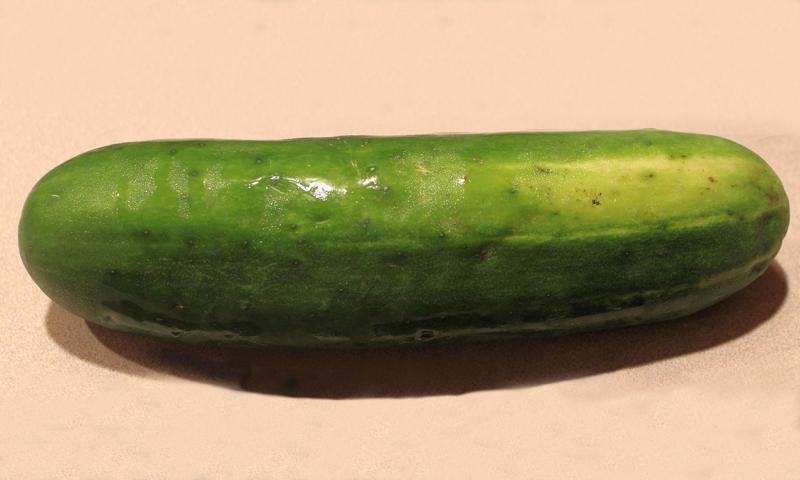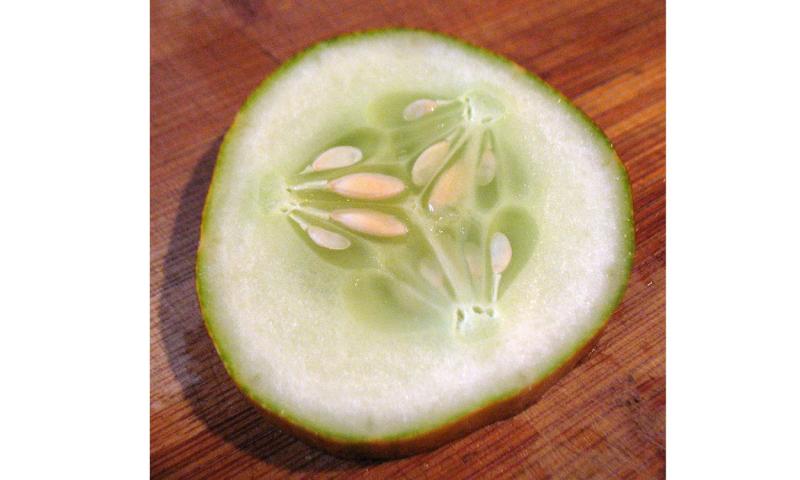Written by Rhoda Burrows, former Professor & SDSU Extension Horticulture Specialist.
Cucumbers fresh from the garden are a summer treat! Harvesting them frequently (e.g. every other day, or even daily) not only helps keep the plant producing new fruit, but it also helps ensure that you are picking them at their optimal flavor and tenderness. When possible, harvest early in the day for the best flavor and crispness.
Fruit that are allowed to stay on the vine too long divert the plant’s energy away from producing new fruit, and they will become soft, and the seeds will be large and begin to harden. Very ripe cucumbers turn deep yellow; the flesh will be spongy, and the seeds will be so hard that they are not edible. Cucumbers picked after their prime and used for pickling can become mushy and sometimes have a slick feel when held in the hand. While they are edible, many people feel that mushy pickles are undesirable.
If in doubt, check the seed package or variety description online to find your variety’s optimum picking size.
Cucumber Types

Different types of cucumbers can have different optimal sizes depending on whether they are used for pickling, or used fresh, such as slicing, burpless, Armenian or other varieties.
Pickling Cucumbers
Pickling cucumbers are a short, blocky fruit with firm flesh. Most varieties make crispy, firm dill pickles when picked at approximately four inches in length (Figure 1). If they grow to the five-to-six-inch range before they are harvested, they may be used fresh for slicing, as long as the seeds haven’t begun to harden.

Slicing Cucumbers
Slicing cucumbers are longer and thinner in shape with flesh that is less-firm than pickling varieties. They are best at about six-to-12 inches in length (depending on the variety) for eating raw and in salads (Figure 2). Less-mature slicing cucumbers have firm flesh like pickling cucumbers, and they can be substituted if pickling varieties are in short supply. Some varieties of slicing cucumbers have very tender skins and bruise easily, so pick and handle them carefully.
Harvest Tips

Why are my cucumbers bitter?
Bitter cucumbers are a common complaint, especially in hot, dry years, but also under very-cool conditions. Anything that slows the growth can allow the accumulation of cucurbitacins, the bitter (and somewhat toxic) compounds in the fruit. These unwelcome compounds often are concentrated at the stem end of the fruit and just under the skin, so cutting off the stem end and then peeling the fruit (slice from the blossom end towards the stem end) may remove most of the unwelcome taste. Some varieties are bred especially to avoid this problem, so if you have encountered the issue repeatedly, look for those varieties, especially those labelled as “burpless.”
Harvesting Baby "cucs"
When the growing season ends and frost threatens, pick any cucumber over ¾” long. These baby “cucs” can be pickled for very crispy gourmet dill or sweet pickles.


